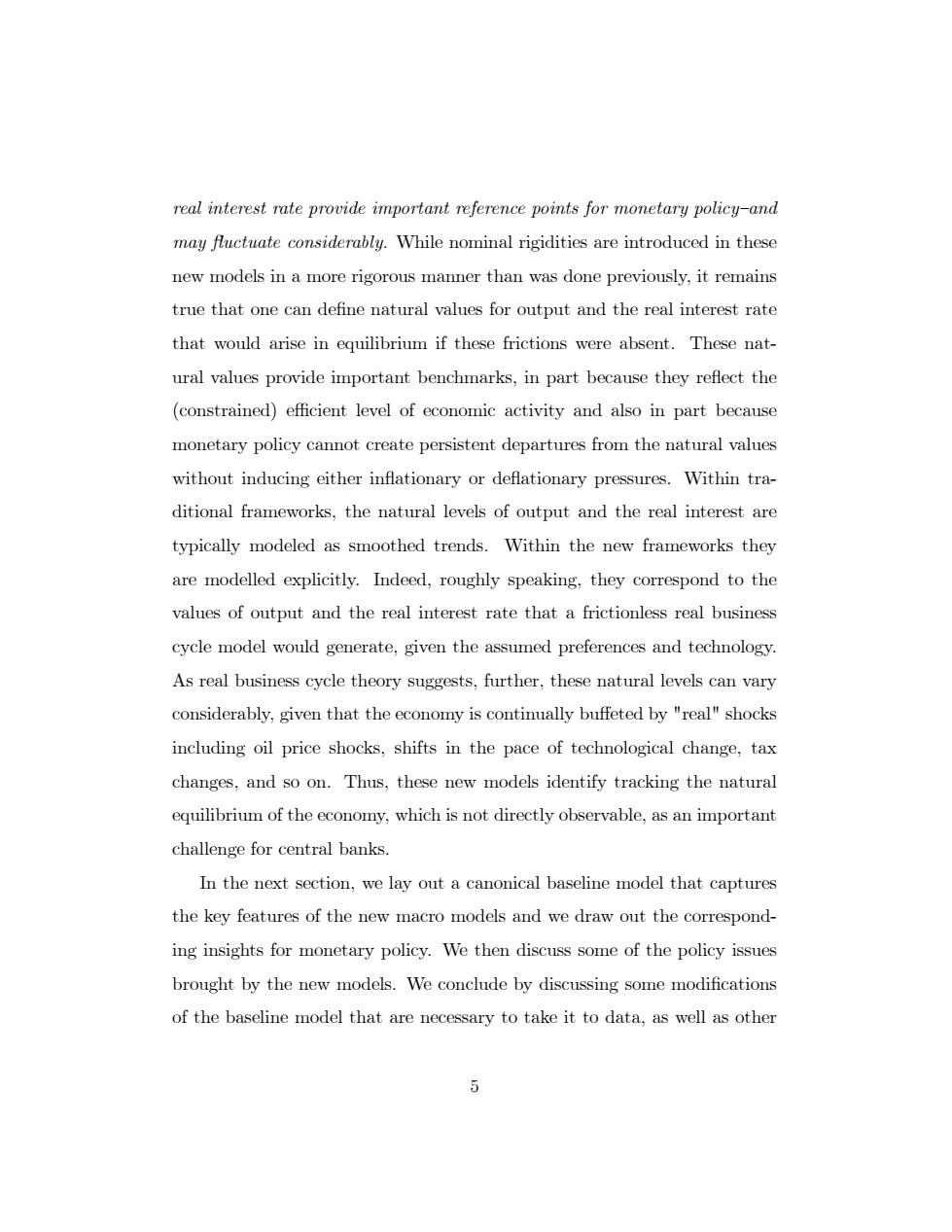正在加载图片...

real interest rate provide important reference points for monetary policy-and may fluctuate considerably.While nominal rigidities are introduced in these new models in a more rigorous manner than was done previously,it remains true that one can define natural values for output and the real interest rate that would arise in equilibrium if these frictions were absent.These nat- ural values provide important benchmarks,in part because they reflect the (constrained)efficient level of economic activity and also in part because monetary policy cannot create persistent departures from the natural values without inducing either inflationary or defationary pressures.Within tra- ditional frameworks,the natural levels of output and the real interest are typically modeled as smoothed trends.Within the new frameworks they are modelled explicitly.Indeed,roughly speaking,they correspond to the values of output and the real interest rate that a frictionless real business cycle model would generate,given the assumed preferences and technology. As real business cycle theory suggests,further,these natural levels can vary considerably,given that the economy is continually buffeted by "real"shocks including oil price shocks,shifts in the pace of technological change,tax changes,and so on.Thus,these new models identify tracking the natural equilibrium of the economy,which is not directly observable,as an important challenge for central banks. In the next section,we lay out a canonical baseline model that captures the key features of the new macro models and we draw out the correspond- ing insights for monetary policy.We then discuss some of the policy issues brought by the new models.We conclude by discussing some modifications of the baseline model that are necessary to take it to data,as well as other 5real interest rate provide important reference points for monetary policyñand may áuctuate considerably. While nominal rigidities are introduced in these new models in a more rigorous manner than was done previously, it remains true that one can deÖne natural values for output and the real interest rate that would arise in equilibrium if these frictions were absent. These natural values provide important benchmarks, in part because they reáect the (constrained) e¢ cient level of economic activity and also in part because monetary policy cannot create persistent departures from the natural values without inducing either ináationary or deáationary pressures. Within traditional frameworks, the natural levels of output and the real interest are typically modeled as smoothed trends. Within the new frameworks they are modelled explicitly. Indeed, roughly speaking, they correspond to the values of output and the real interest rate that a frictionless real business cycle model would generate, given the assumed preferences and technology. As real business cycle theory suggests, further, these natural levels can vary considerably, given that the economy is continually bu§eted by "real" shocks including oil price shocks, shifts in the pace of technological change, tax changes, and so on. Thus, these new models identify tracking the natural equilibrium of the economy, which is not directly observable, as an important challenge for central banks. In the next section, we lay out a canonical baseline model that captures the key features of the new macro models and we draw out the corresponding insights for monetary policy. We then discuss some of the policy issues brought by the new models. We conclude by discussing some modiÖcations of the baseline model that are necessary to take it to data, as well as other 5